|
Home
The Magic Castle
holt@nlpnow.net
|
NLPNOW
13 Norbiton Hall
London Road
Kingston upon Thames
Surrey
KT2 6RA
UK
Call (UK) 07973 178602 or 0845 130 6213 for more information.
Email: holt@nlpnow.net
|
|
|
Phillip Holt of NLPNOW, often talks in his courses of
his experiences as a Scuba Diver. Phillip is a very experienced PADI
Master Diver, with over 600 dives logged all over the world.
The photographs taken in these examples,
were taken with a Nikonos 5 underwater camera, a Nikonos SB 102
strobe flash, various detachable lenses for close-up, normal and
wide-angle shoots, and using 35mm slide film.
Phillip is also a Radio Ham, with a
UK call sign of G8YJQ.
|
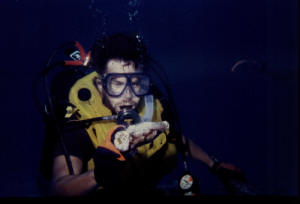
|
Phillip Holt investigating a Coca Cola
bottle found on the sea bed.
|
Phillip really is
underwater, see the bubbles from his mouth and demand-valve.
|
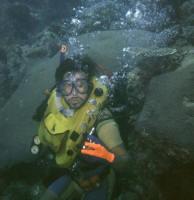
|
|
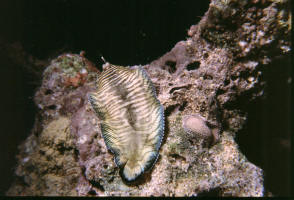
|
This very strange flat fish,
multi coloured and striped in brown, photographed on a night dive,
had never been seen prior to Phillip's picture.
|
Do you see the fish? This is a
Scorpion fish. It's barbs on it's spine are highly poisonous, and
will penetrate the skin of those paddling in the shallows. It's eyes
are top middle, two little black dots.
|
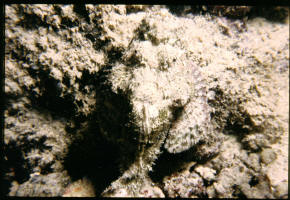
|
|
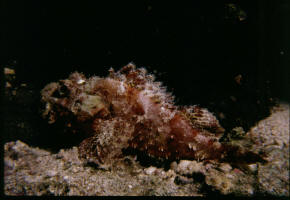
|
This is the same Scorpion fish
seen from the side, and after Phillip had aroused it to change to
the danger red signal. The barbs can be seen on it's spine.
|
A night dive picture of a
Parrot fish at rest. Notice it's front teeth, used to scrape and
crush the coral it eats to feed on the coral. The resultant fine
crushed coral it excretes through it's body forms the golden sandy
beaches we all lie out on to sun-bathe.
|
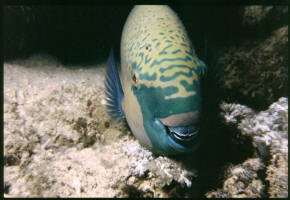
|
|
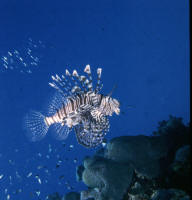
|
A Lion or Turkey fish, with
such lovely feather like fins. But, those long ones on it's spine
are highly poisonous if the penetrate the skin.
|
Phillip's favourite fish, the
Clown fish, swimming above an open Sea-Anemone. The mouth of the
Sea-Anemone can be seen just below the right-hand yellow and white
Clown.
|
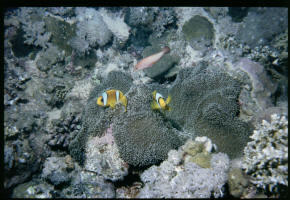
|
|
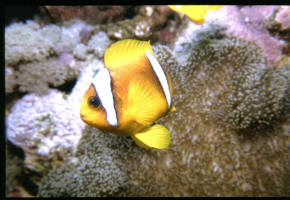
|
A closer look at a Clown fish
as it tries to attract anything into the Sea-Anemone, whose
poisonous tentacles will stick to a trapped fish an poison it, prior
to eating it. The Clown has enzymes on it's body which allows it to
swim in the tentacles.
|
A Clown fish swims in the
tentacles trying to attract other fish into the tentacles.
|
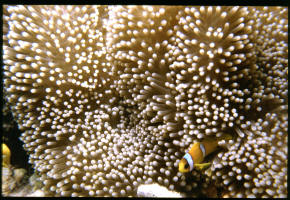
|
|
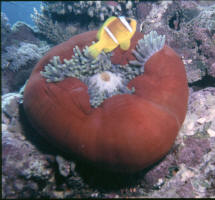
|
A closed Sea-Anemone, with it's mouth clearly visible,
probably digesting a meal of a fish attracted into it's tentacles.
The Clown fish and Sea-Anemone benefit each other symbiotically by
the Clown attracting other fish to the Anemone and surviving on scraps left over.
|
|










